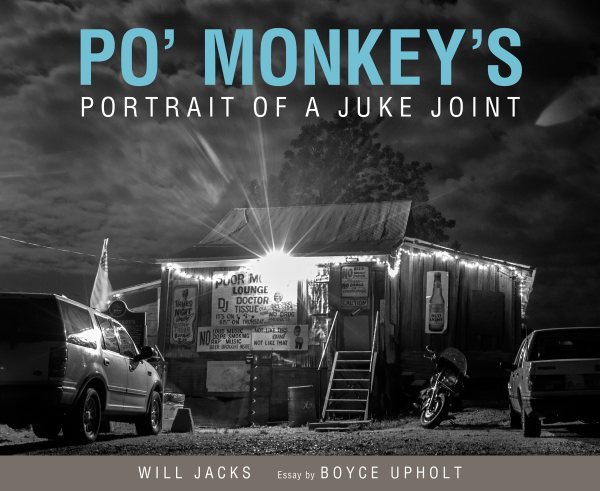By Chris Goodwin. Special to the Clarion-Ledger Sunday print edition (October 27)
Becoming a famous and beloved institution is no guarantee of permanence. So with Po’ Monkey’s Lounge outside Merigold, the creation and full expression of Mr. Willie Seaberry—farm laborer by day, internationally known juke joint proprietor by night.
 After decades of those-who-know-don’t-need-to-ask operation catering to locals in search of a Thursday evening respite, the establishment rose to prominence as white photographers and journalists enthralled by its authenticity brought news of its existence to their audiences, turning it into a must-see site for blues tourists traveling the Mississippi Delta.
After decades of those-who-know-don’t-need-to-ask operation catering to locals in search of a Thursday evening respite, the establishment rose to prominence as white photographers and journalists enthralled by its authenticity brought news of its existence to their audiences, turning it into a must-see site for blues tourists traveling the Mississippi Delta.
Alas, the death of Mr. Seaberry in 2016 was also the death knell for the lounge. We’re fortunate to have Will Jacks’ moving photographic tribute, Po’ Monkey’s: Portrait of a Juke Joint (University Press of Mississippi), to document—and remind us—of what has been lost.
A trained photographer and gallery owner who grew up not far from Po’ Monkey’s, Jacks spent a decade at the lounge, connecting with the people who worked there and reconnecting with school friends who were some of its regulars. Jacks often had his camera in hand to capture the riotous, exuberant dance floor as well as quieter moments off to the side. More than seventy of those images are reproduced in black and white in this oversized hardcover edition. That color choice denies readers the full glory of Mr. Seaberry’s famous bright outfits, but it perfectly suits the fundamental nature of a vernacular structure begun nearly 100 years ago.
Jacks gives equal time to the people and the place in his selection of shots. There are women and men, black and white, young and old pictured shooting pool, dancing, or listening to music (in the tight confines of the lounge usually provided by a DJ or jukebox, not a live band), sitting together at the tables with drinks at hand, or posing for portraits outside the building in front of an improvised screen.
But equally rewarding are the images of the building. Po’ Monkey’s was located in the house where Mr. Seaberry lived for much of his life. He reserved for himself a small bedroom at the back—the rest was richly decorated with stuffed monkeys (the juke joint took its name from Mr. Seaberry’s nickname) and posters, photographs, beads, and strand after strand of Christmas lights, which transformed the Spartan interior of a sharecropper’s cabin into a joyous space where people came to forget their cares for the night.
The photographs highlight the textures of that space, from the plastic hung to keep out the rain—a pragmatic decision that became a design feature when they were tufted to the ceiling—to the corrugated tin and candy-striped handrails of the exterior. The hand-painted signs near the front door clearly laid out the owner’s positions: No loud music, dope smoking, rap music, or beer brought inside.
An introductory essay by journalist Boyce Upholt and a photographer’s statement at the end of the book tell the particulars of Willie Seaberry’s life story as well as they can be teased out, his close relationship with the Hiter family who owns the house and farmland on which it sits, and the story of Po’ Monkey’s during its years of operation and in the time following his death.
It seems unlikely that the lounge will ever reopen, and even if it were to, it would be a different place from what its patrons have known. It was the larger-than-life personality of its owner that made Po’ Monkey’s the welcoming place that it was for so many, and it is thanks to Will Jacks that we have this record of that time and that place.
Chris Goodwin lives in Jackson. He visited Po’ Monkey’s for the first time in 2007 and hasn’t danced that much since.


Comments are closed.